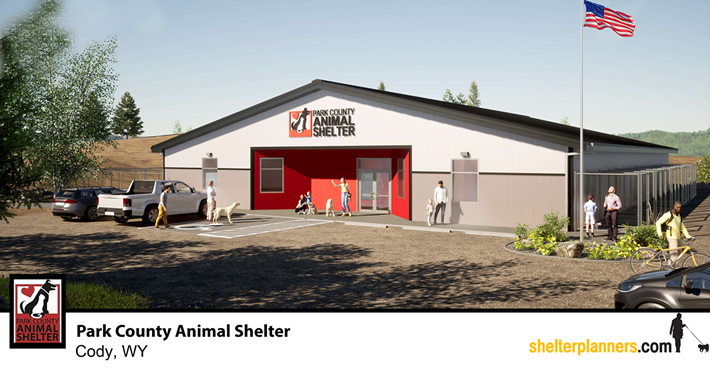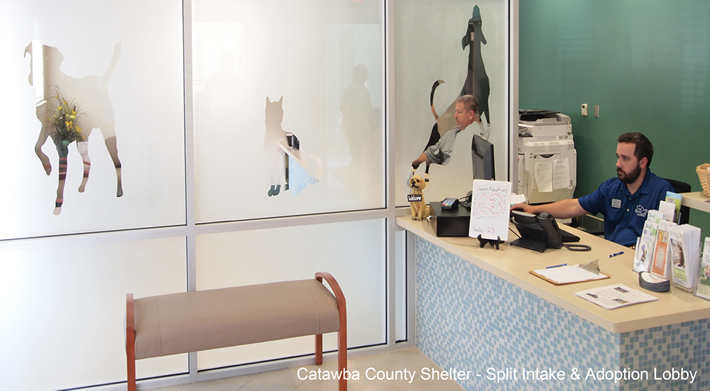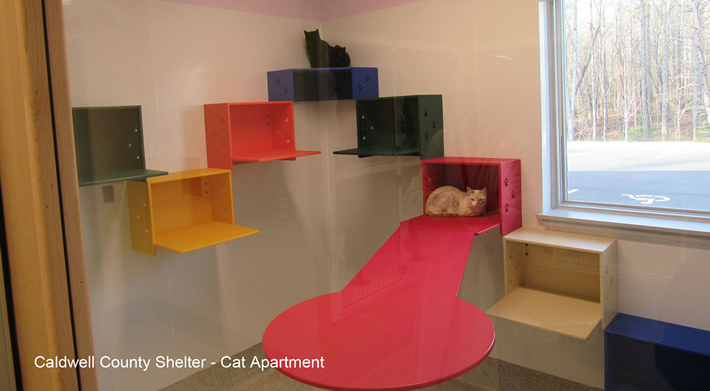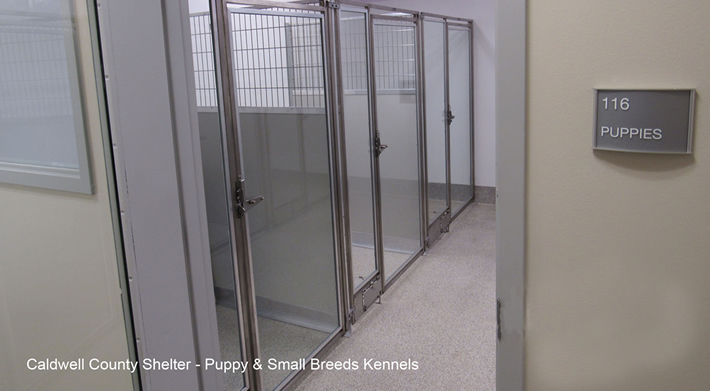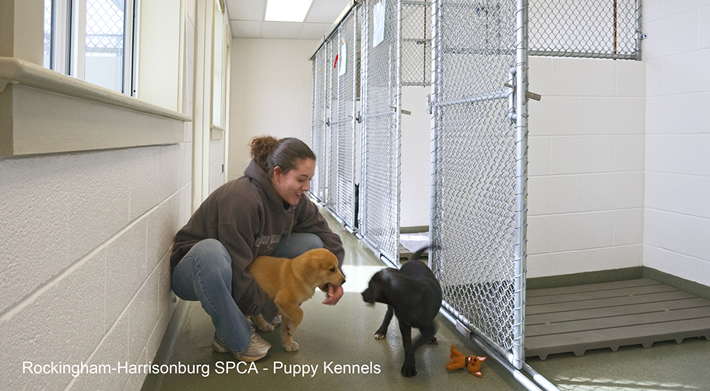 April 21, 2023
April 21, 2023 Animal Shelter Blog
Entries in animal shelter architect (10)
 April 21, 2023
April 21, 2023  October 28, 2013
October 28, 2013 Animal Shelter Plans - More Than a Fancy New Building
 Animal Shelter Architects Should Strongly Consider First Impressions
Animal Shelter Architects Should Strongly Consider First Impressions
Animal Shelter Plans
Animal shelter plans must account for human psychology’s role in how the community’s animal shelter is perceived. You know the saying, ‘You only have one chance to make a first impression.’ When designing and planning an animal shelter, the animal shelter architect should imagine the initial impression of a potential adopter/donor/community member. What will he or she think the first time they tour the building? Imagine the guest arriving in the parking; walking along the sidewalk to the entrance; entering the shelter for the first time. What does he or she experience?
 Animal Shelter Plans - A Warm and Welcoming Lobby Area is Crucial
Animal Shelter Plans - A Warm and Welcoming Lobby Area is Crucial
Both the animal shelter plans and animal shelter building must convey a sense of comfort. The shelter should be an inviting, low stress environment that provides a sense of well-being. It should have lots of natural light, live plants, and present the animals in an attractive manner which encourages their adoptions; putting the animals’ best foot forward (no pun intended).
At Shelterplanners, our animal shelter architects incorporate several design considerations when determining how to give the shelter the best chance to be a success in the community. A few design considerations include:
- How are animals received and housed?
- How is the building cleaned and disinfected?
- How is sound controlled?
- How are guests greeted?
Your animal shelter architect should take time to understand your vision, your procedures and workflows, and the human psychology element of designing an animal shelter. Unfortunately, improving adoption rates and operating a successful animal shelter is about more than a pretty, new building. There are several custom variables that need to be addressed prior to designing and planning a shelter. These building are highly specialized. It takes an experienced team of architects and builders to deliver a building that gives the animals and the community the best chance to succeed.
 October 8, 2013
October 8, 2013 Go from Planning an Animal Shelter to Building an Animal Shelter
 Animal Shelter Plans Should Involve Increasing Community Awareness!
Animal Shelter Plans Should Involve Increasing Community Awareness!
It’s exciting to review animal shelter plans and animal shelter designs, but whether the design becomes an actual physical animal shelter building often hinges on one very important question: Is the majority of your community aware of the dire conditions at the animal shelter?
Because you are passionate about helping animals, you probably think that the entire community is just as educated about the dire conditions. It’s easy to assume that everyone has the same information as you. You probably say, “Of course my community is aware of the low adoption rates, the high kill rates, and the overall poor conditions at the local animal shelter.” However, recent research indicates otherwise.
A recent PetSmart Charity survey revealed that only 42% of the general population is aware of the pet overpopulation problem in the United States. 88% of respondents underestimate the number of pets euthanized annually. While it’s always a good idea to take survey results with a pinch of salt, these numbers cannot and should not be ignored!

While the amazing staff and volunteers pour every ounce of energy into saving animals, they often neglect educating the community. As we’ve mentioned several times in the past: without community support, it’s highly unlikely that any major improvements will happen at the shelter.
Here are two effective and cost efficient ways to increase community awareness:
1) Gather Statistics and Broadcast via Social Media
You don’t need to be overly dramatic; simply state facts and broadcast these facts on your social media channels (Facebook, Google+, Instagram, Twitter) with a call to action. For example:
"Did you know Acme County Animal Shelter Kills 77% of the pets that enter the facility? For more information on how you can help improve Acme County’s animal care, please contact Jane Doe at xyz."
Use our Free Report to collect your statistics and broadcast the results. Continue to gather statistics about your shelter – the more statistics you have about the shelter, the more you’re able to build your case for support.
2) Schedule a Field Trip for Community Leaders
Here’s a recent quote from a community leader:
“I don’t think we truly get the impact you make in the county when we’re sitting around the budget table and we look at a five or six-figure request,” Parker said. “It doesn’t have the personality that being here does.”
Kindly request the community leader take a tour of the shelter. If the community member can’t make it, why not video tape the shelter and upload the video to YouTube and broadcast it on your social media channels?
It’s up to your shelter’s leaders to increase awareness and community support. When a community asks, “How can I help?” be ready with your animal shelter plans to show your vision for the future.
 September 24, 2013
September 24, 2013 How to Increase Animal Shelter Donations
 Source: Belly Rubs Pet Care
Source: Belly Rubs Pet Care
Unfortunately, money is necessary to improve animal shelter conditions – specifically major renovations, including animal shelter design and animal shelter building plans and construction. The biggest mistake we see when helping communities raise money for a new animal shelter, is the mistake of begging for help:
“The animals need your help – please donate.”
“The animal shelter hasn’t been updated in 40 years – please help.”
“Please donate to your local animal shelter.”
 Begging likely won't increase donations
Begging likely won't increase donations
These tactics simply don’t work.
The above messages do little to convince the people in your community to part with their money. Think of how often people are asked to donate money - it’s rare to be in public without being asked to donate to an organization. Even the grocery store checkout line isn’t safe. People have become immune to the traditional plea: “Please support our cause because we need help.”
In order to give your campaign a chance to be successful, you should answer two questions your potential donors are asking about your shelter:
1) Why should I donate my hard-earned money to the animal shelter vs. every other organization asking for my money?
2) How will my money be used – will it really make a difference?
As previously mentioned, it's not only important to have animal shelter plans available, but also to have a compelling story about the current shelter and how a new shelter would improve the community for both animals and people. Educate your community about the current problems at the shelter. Inform people about the dire situation, and then back up your claims by compiling specific statistics about your shelter – adoption rates, euthanasia rates, and intake rates.
Community involvement, specifically donations, will only happen with increased awareness of the dire situation at the animal shelter and there’s a specific plan to improve those dire conditions.
 September 11, 2013
September 11, 2013 Animal Shelter Plans and An Informed Community Equals New Animal Shelter
Recently, the animal shelter architect team at Shelterplanners designed an animal shelter for Iredell County, NC. Here is a picture of the design plans:
 Animal Shelter PlansBecause it can be difficult for anyone other than an architect to understand such designs, we created an image of what the animal shelter would look like when the building was completed. Here is the 3D image:
Animal Shelter PlansBecause it can be difficult for anyone other than an architect to understand such designs, we created an image of what the animal shelter would look like when the building was completed. Here is the 3D image:

The design plans and 3D rendering allow a few things to happen:
1) The shelter's staff and local officals can easily show the public the vision for the shelter.
2) Your local citizens will have something to rally around - the general public doesn't understand architect mumbojumbo! The combination of plans and a 3D rendering will allow more people to understand the proposal.
The more people truly understand the project, the more likely they will donate and/or support the new animal shelter.
When your community is involved, things happen. Ultimately, the community decides whether an animal shelter is built. The Iredell County community decided it wanted to support its animals, here's the final product:

